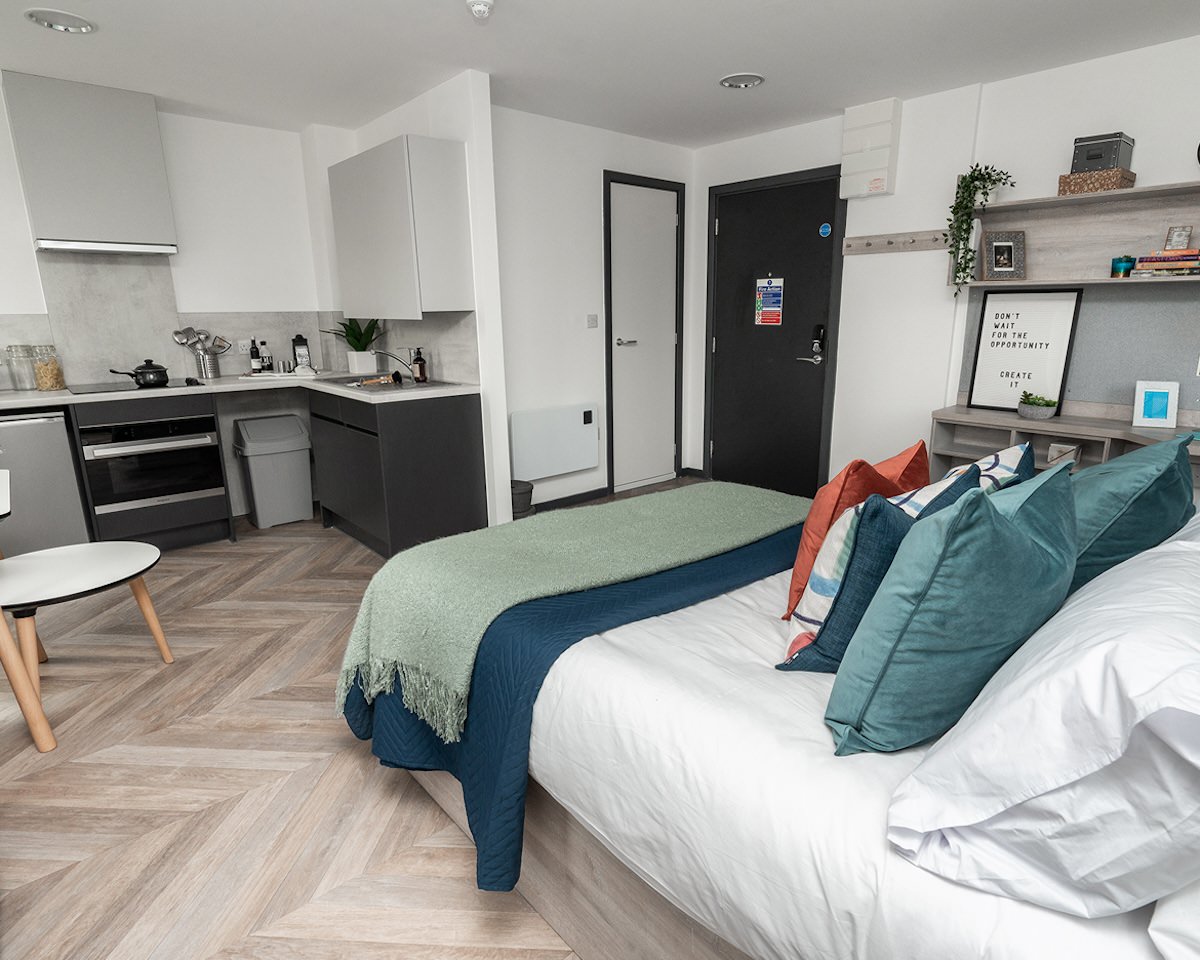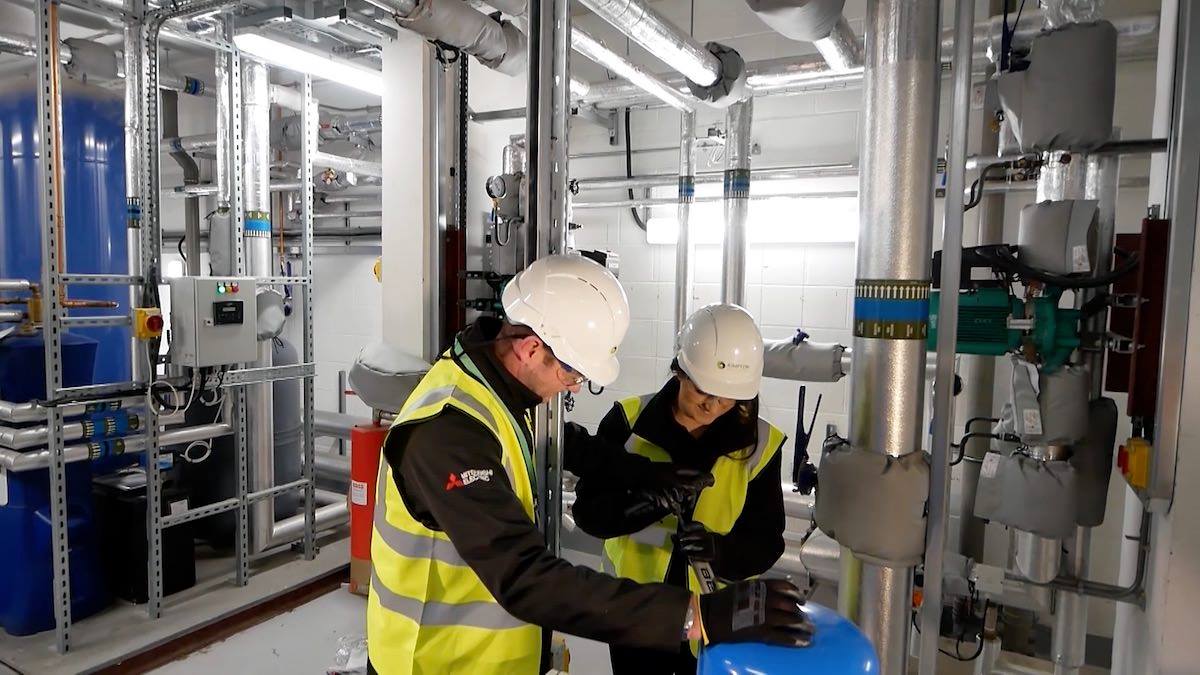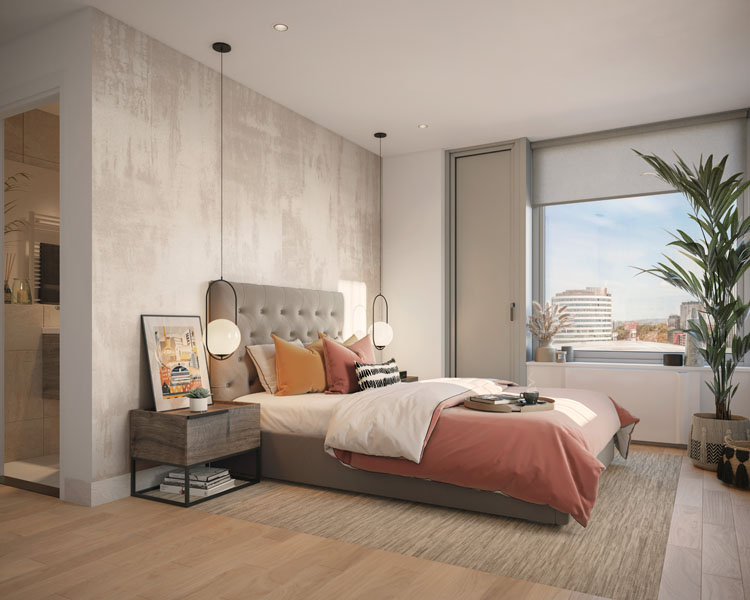
Back in 2021 we wrote a piece about the changing shape of the UK PBSA (Purpose Built Student Accommodation) and BTR (Build to rent) market and felt that there would be a growing demand for refurbishment in both sectors.
We have recently been revisiting the whole area with the growth of serious enquiries that are coming our way, looking at exactly that – The refurbishment of PBSA and BTR accommodation.

– The UK PBSA sector now accommodates roughly 600,000 purpose-built beds, with more needed to meet the demand from over 1 million students living away from home
– Students now expect high-quality spaces at lower price points. In the article we referenced back then, we believed that the NUS was aiming for 25% of beds at £4,200 per year, yet only 19% currently meet that standard. However, the correct goal is to ensure 35% of rooms are available at a price point equivalent to 55% of the maximum student loan in England, according to Generation Rent.
Looking at the average figures in Liverpool, University Living estimates suggest an average of £180 per week for student accommodation within the city. This is well over double that target figure and can’t all be accounted for by inflation over the last four years.
– Many of the plastic pod style bathrooms are at the end of their life. The decision for the operator is whether to try and upgrade it with a like for like plastic replacement, or invest in a more conventional bathroom fit out. When most of these spaces were built, the bathrooms, or even the whole room pod was loaded from the outside, before being plumbed in and the building clad around the individual units. This is no longer viable without a major strip back for the whole building to its steel or concrete frame. Refurbishments will have to be delivered from the inside not the outside.
– Student accommodation costs are a huge strain on many parents at the fringes, whose children are going to university and need their support to live away. This creates a tension: providers must deliver better quality without raising prices—driving the need to renovate existing assets more efficiently and incorporate technology & energy upgrades.
The layout of student accommodation is changing too, with a distinct movement away from standalone studios toward larger, shared clusters offering simple en‑suites and shared kitchens. And the way education is delivered has changed too. It’s no longer all face to face learning, so accommodation must support hybrid learning—students, who now expect comfortable remote-study areas in their rooms
Any assets not meeting this changing demand for revised layouts or tech expectations require refurbishment to stay competitive and relevant for the future.

We have now seen a fundamental shift toward renewable technologies in both PBSA and BTR. Some of our early student accommodation projects were powered and/or heated with CHP’s (Combined Heat and Power) as Government Grants were available to install this early technology that was at the time considered a ‘renewable’.
Incredibly, when we revisit some of these sites, the CHP has never even been switched on and we are tasked with removing them to install more conventional tech. The cost of energy has had a huge impact on what now works best and a plant room installed just five years ago may now be outdated in efficiency and warrant replacement—to cut energy use and costs
With the decline of CHP, we’re increasingly replacing them with ASHP systems and electric panel heaters to handle domestic hot water more sustainably and cost‑effectively. These are now often at a ‘per room’ level with each room for apartment being fitted with a stand alone ASHP.
EPC Ratings have also had a huge impact. These have changed in scope over recent years and any building that does not meet an EPC rating of ‘C’ by April 2027 and a ‘B’ rating before April 2030 will see a serious downturn in its value. It will become much more difficult to sell or lease. And, in reality, it will be far more expensive to operate than a comparable building that has been brought up to the higher EPC standards.

The BTR market follows similar patterns—the same design models, energy expectations, affordability pressures, and need for sustainable plant-renewal
If you are the type of young professional that BTR is attracting, you will be demanding a sensible space to work from home, other than a dining room table and ideally where you can close a door on your work ‘space’ and convert it simply back into your home.
Affordability vs Quality
Better spaces are in demand, but rising construction costs mean refurbishment is often more economical than new builds. There will be older building with poor EPC ratings that are both cheap and ripe for refurbishment.
Regulatory & Environmental Pressures
New regulations and net-zero targets push landlords to upgrade M&E systems, especially heating and hot water plant in order to stay within EPC ratings and retain lower operating costs.
Asset Competitiveness & Resale Value
Modernised communal layouts, renewable energy systems, and tech-ready rooms help buildings remain competitive, secure high occupancy, and retain the strongest resale value.
Lifecycle Asset Management
Older systems (e.g. gas boilers, incandescent lighting) might still function, but will be hugely out-performed by lower carbon upgrades. In terms of both quality and operating costs.

If you would like to discuss any of our services, please call 0151 343 1963 or complete the form below and we will be in touch shortly.